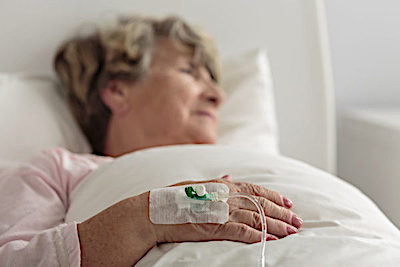How Medical Professionals Help Identify Abuse In Nursing Homes
Category: Uncategorized
Author: Georgina Tyburski
Posted:
March 22, 2019
 While there are no exact statistics for instances of elder abuse in nursing homes, many medical professionals have estimated that about 1 in 10 nursing home residents experience abuse. Even more troublesome, anonymous surveys and interviews with staff members and assistants paint a worse picture: over 30 percent of staff reported seeing physical abuse and over 80 percent reported seeing psychological abuse.
While there are no exact statistics for instances of elder abuse in nursing homes, many medical professionals have estimated that about 1 in 10 nursing home residents experience abuse. Even more troublesome, anonymous surveys and interviews with staff members and assistants paint a worse picture: over 30 percent of staff reported seeing physical abuse and over 80 percent reported seeing psychological abuse.
Unfortunately, nursing home staff are not always so forthcoming with this information, which is why medical professionals and other caretakers must take it upon themselves to stay vigilant and look for signs of abuse within these facilities. Today, we're going over ways which doctors, nursing assistants, and staff at nursing homes can look for signs of elder abuse while doing routine check ups.
Paying Attention to the Patient's Surroundings
One edge that medical professionals have in this context is that they are essentially making a “house call†when they check in with a nursing home resident. This means they can look at the context alongside the patient. Important questions to ask include: Are the patient's living quarters well-kept or in disarray? How are his/her living arrangements? Does it look like the patient gets visitors?
It's just as important to look at the overall facility as well, including assessing how patients and staff interact with one another, how well-maintained the hallways and common areas appear to be, and more. These can all serve as signs that point towards abuse and neglect.
Keeping Abuse and Neglect at the Forefront
Medical professionals deal with countless clients and often have to move fast between visits. Within this context, it's critical that they stop and make time to consider the possibility of abuse. This isn't something that is always at the front of their mind, but abuse should never be overlooked during a diagnosis.
For example, is the patient losing weight because he/she is not being fed, is that bruise accidental or caused by someone, does a fracture line up with the story, etc. Medical professionals should always pay special attention to any potential indicators of abuse or neglect.
Communicating with Other Healthcare Professionals
As the anonymous surveys suggest, some abuse does not go unnoticed but rather it is ignored or overlooked. Another key strategy to identifying abuse is to ensure communication between all medical professionals, relatives, and other parties involved in the well-being of each patient. If anyone notices that anything seems “off†or wrong, this should be flagged, documented, and followed up on as soon as possible.
Learn more about how LNCs Help Attorneys Identify Elder Abuse
Legal nurse consultants help attorneys uncover the key medical aspects of their cases, and they're well-versed in identifying signs of elder abuse, whether at home, within nursing home facilities, when under the care of hospitals, and more.

 While there are no exact statistics for instances of elder abuse in nursing homes, many medical professionals have estimated that about 1 in 10 nursing home residents experience abuse. Even more troublesome, anonymous surveys and interviews with staff members and assistants paint a worse picture: over 30 percent of staff reported seeing physical abuse and over 80 percent reported seeing psychological abuse.
While there are no exact statistics for instances of elder abuse in nursing homes, many medical professionals have estimated that about 1 in 10 nursing home residents experience abuse. Even more troublesome, anonymous surveys and interviews with staff members and assistants paint a worse picture: over 30 percent of staff reported seeing physical abuse and over 80 percent reported seeing psychological abuse.